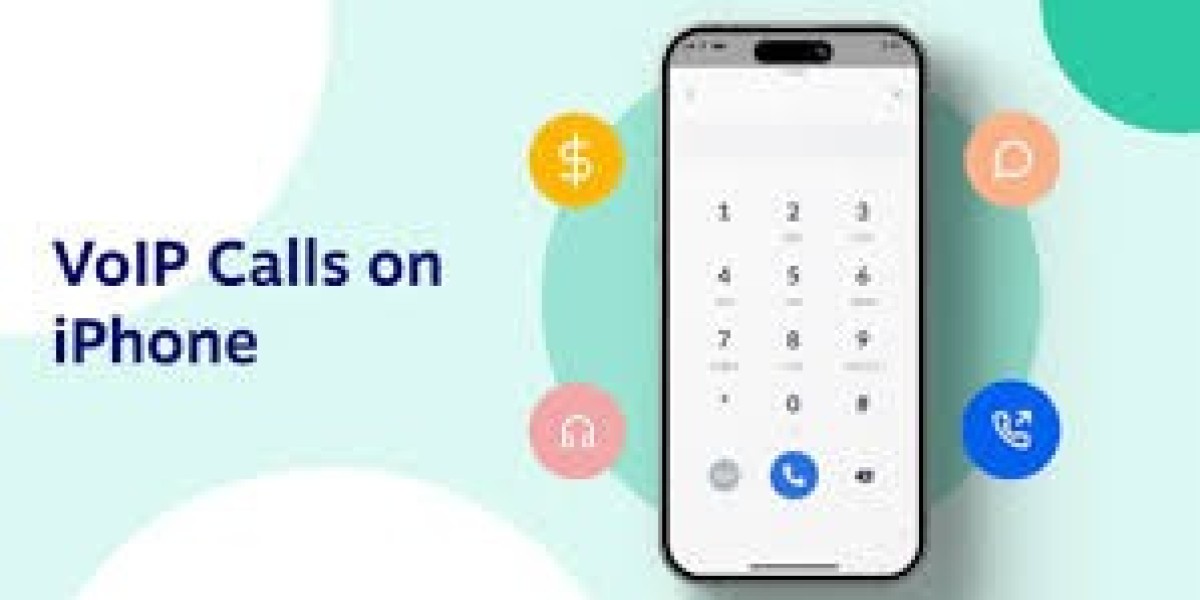In today’s fast-moving, always-connected world, voice communication remains an essential business tool — but the way we make calls is changing. Gone are the days when desk phones and clunky PBXs were the only options. Mobile-first teams expect the same reliability, control, and cost-efficiency of a business telephony system right from their iPhone. That’s where iPhone SIP Client service by ringopus steps in: a polished, powerful SIP client for iOS that puts enterprise-grade VoIP in the palm of your hand.
Call here for details: 1-800-653-3407
This post walks you through what the Ringopus iPhone SIP Client is, why it matters, how it works, and how businesses of all sizes can leverage it to cut costs, improve mobility, and maintain a consistent communications experience. Whether you’re an IT manager evaluating telephony options or a small business owner who wants professional calling without the hardware, read on — this is a practical, non-techy guide to get you started.
What is a SIP client, and why use one on an iPhone?
SIP — the Session Initiation Protocol — is the backbone of many VoIP (Voice over IP) systems. A SIP client is simply the software that lets a device (like your iPhone) register with a SIP server and make/receive SIP calls, use advanced telephony features, and integrate with your business phone system.
Putting a SIP client on an iPhone gives you:
- Your business number on your phone (not your personal mobile number), so calls and caller ID remain professional.
- Access to PBX features (transfer, hold, conferences, voicemail, presence) while mobile.
- Lower calling costs, especially for international and inter-office calls.
- Centralized control for IT — user provisioning, security settings, and monitoring can be managed from the server side.
Ringopus’s iPhone SIP Client is designed specifically to deliver these benefits on iOS with a smooth, user-friendly interface and enterprise-level capabilities.
Key features of the Ringopus iPhone SIP Client
Ringopus aims to blend power and simplicity. Here are the standout features that many businesses will find compelling:
1. Native iOS experience
The app looks and feels like a native iPhone app — intuitive menus, crisp design, and fluid navigation. That reduces onboarding friction and increases adoption among non-technical users.
2. Multiple accounts & profiles
Users can register multiple SIP accounts (useful for contractors or employees who need access to different departments or numbers) and switch between profiles seamlessly.
3. Secure SIP and media transport
Supports secure signaling (TLS) and SRTP for encrypted voice media, helping meet privacy and compliance needs. Security options are configurable to fit corporate policies.
4. Integration with corporate PBX features
Full support for standard PBX functionality: call transfer (attended / unattended), call parking/pickup, voicemail access, call recording (where enabled), DTMF, and more.
5. High-quality voice codecs
Ringopus supports modern codecs that balance audio quality and bandwidth use, adapting to different network conditions (Wi-Fi, 4G/5G) for the best possible call experience.
6. Push notifications for inbound calls
To conserve battery and ensure reliable incoming call delivery when the app is in the background, Ringopus uses push-based signaling to wake the app for calls — a must-have for mobile SIP clients on iOS.
7. NAT traversal and network adaptability
Built-in STUN/TURN and other techniques to handle NAT and firewall scenarios so calls can connect reliably without complex user networking configuration.
8. Contact integration and presence
Sync corporate directories and display presence information where supported by your PBX — know whether a colleague is available before you call.
9. Call analytics and troubleshooting tools
For administrators, Ringopus provides logs and basic diagnostics to help resolve audio quality or registration issues quickly.
Who benefits most from using Ringopus on their iPhone?
The service suits a wide range of users and organizations:
- Remote/hybrid teams — employees who travel or work from home but need a full-featured business phone experience.
- Sales and field staff — keep your business number on every call and use PBX features while on the go.
- Small and medium businesses (SMBs) — get enterprise telephony features without investing in desk phones.
- Large enterprises — extend PBX functionality to mobile devices and centralize management.
- International companies — lower offsite or international calling costs by routing through your SIP trunk/provider.
Real-world use-cases
To make the benefits more concrete, here are a few practical scenarios where Ringopus shines:
- Customer-facing staff: A helpdesk agent receives customer calls through their desk extension on the iPhone while working from home, with full access to transfer and conference features.
- Sales reps on the road: A sales representative uses the Ringopus client to make calls that display the company caller ID, use CRM click-to-call links, and record important conversations (where permitted).
- Branch office consolidation: A company consolidates voice infrastructure into a central PBX and uses Ringopus to provide full telephony features to branch employees without additional hardware.
- Freelancers and consultants: Contractors can manage multiple business lines or client numbers on a single device, avoiding the need for a separate phone.
Setup and deployment: simple but powerful
One of the strengths of Ringopus is how deployment scales from single users to full enterprise rollouts.
For individual users
- Install the Ringopus iPhone app from the App Store.
- Enter SIP credentials (username, password, SIP server).
- Configure basic preferences (voicemail, codecs, notification settings).
- Start making and receiving calls using your business extension.
That’s it — most users can get up and running in minutes.
For IT teams / admins
- Provisioning: Administrators can provision accounts centrally on the PBX/SIP server and distribute credentials (via secure methods).
- Configuration policies: Enforce security (TLS/SRTP), codec preferences, and push notification setup across users.
- Monitoring: Use SIP server logs and Ringopus diagnostic outputs to monitor registration status and call quality metrics.
- MAM & MDM support: Ringopus can be deployed alongside mobile device management (MDM) systems for trusted installs and configuration control.
Audio quality and network considerations
Voice quality depends on both the app and the network environment. Ringopus addresses this with:
- Adaptive codec selection to switch codecs if bandwidth drops.
- Echo cancellation and jitter buffers to reduce common VoIP artifacts.
- Bandwidth recommendations: For a consistent experience, a typical SIP client needs somewhere in the ballpark of 30–100 kbps up/down per active call depending on codec — Wi-Fi and modern mobile networks easily support this for most users.
- Wi-Fi-first behavior: Prefer Wi-Fi when available for cost efficiency and stability, with graceful handoff to cellular if coverage changes.
For deployments where audio quality is critical (contact centers, executive communications), consider prioritizing QoS on corporate Wi-Fi and advising users about ideal network conditions.
Security and compliance
A modern SIP client must take security seriously. Ringopus provides:
- Encrypted signaling and media (TLS + SRTP) to protect calls from interception.
- Authentication using strong SIP credentials and password policies.
- Secure provisioning options for administrators to avoid exposing credentials.
- Compatibility with corporate security tools, allowing organizations to incorporate the app into their security posture.
If your organization handles regulated data (healthcare, legal, finance), discuss compliance requirements with your telephony provider and ensure call recording, retention, and access controls meet local regulations.
Troubleshooting: common issues and fixes
No system is flawless, and mobile networks introduce variability. Here are common issues and practical fixes:
- Calls fail to connect / registration issues: Check SIP credentials, server address, and whether TLS port is open. Verify network allows SIP traffic; enable STUN/TURN if behind NAT.
- Poor audio quality: Switch to Wi-Fi if on cellular, or try a different Wi-Fi network. Check for competing apps consuming bandwidth. Experiment with a codec that uses less bandwidth.
- No incoming calls when the app is backgrounded: Ensure push notifications are enabled for the app and that the SIP server is configured for push-based wake-up (this is required on iOS to conserve battery).
- Battery drain: Background audio or persistent network keep-alives can consume battery. Ringopus is optimized for push-based call signaling to minimize this; confirm you’re using the latest app version and have allowed push notifications rather than persistent background registration.
- Microphone or speaker not working: Confirm app has microphone permissions in iOS settings and that the correct audio device (handset, headset, Bluetooth) is selected.
Ringopus documentation and support resources typically provide step-by-step troubleshooting guides; administrators can also gather SIP logs for deeper analysis.
Comparison: Ringopus vs generic softphone apps
If you’re evaluating options, here’s how Ringopus generally stacks up against generic softphone apps:
- User experience: Ringopus emphasizes a polished, iOS-native UI versus some generic apps that feel cobbled together.
- Enterprise features: Better PBX integration and push-call reliability for backgrounded calls.
- Security: Strong defaults for TLS/SRTP and enterprise-friendly provisioning options.
- Support and updates: Commercial SIP clients often provide regular updates, compatibility testing with iOS releases, and enterprise support channels.
That said, your choice should hinge on specific needs: integration with your PBX, required features (call recording, presence, multi-account), and administrative controls.
Licensing and cost considerations
Pricing models for SIP clients typically vary: some are free with basic features, others use one-time licensing, and enterprise-grade offerings may require per-user subscriptions or seat licenses bundled with vendor support. When budgeting:
- Consider total cost of ownership (licensing + provisioning + support) rather than just app cost.
- Factor SIP trunk costs and any per-minute charges for outside calls.
- For larger rollouts, prioritize vendors that provide MDM-friendly deployment and enterprise support.
Avoid vendor lock-in by ensuring SIP standards compliance — a good SIP client should work with any compliant SIP server or PBX.
Best practices for rolling out Ringopus in your organization
- Pilot with a small group: Start with a few power users to validate call quality and workflows.
- Document configuration: Create step-by-step guides and quick reference sheets for users.
- Train users on features: Highlight differences between mobile and desk-phone behaviors (e.g., call transfer methods).
- Integrate with helpdesk: Route provisioning and troubleshooting through your IT helpdesk with a clear escalation path.
- Monitor usage: Use call metrics to identify training needs and network bottlenecks.
- Enforce security policies: Use MDM and centralized credential management where possible.
Final thoughts — mobility without compromise
Ringopus’s iPhone SIP Client service delivers something modern teams desperately need: the full power of your corporate telephony system on a device you carry every day. It combines call quality, enterprise features, and security into a package that’s friendly for both end users and IT administrators.
If your organization values professionalism (calls from a corporate number), cost-control (lowered mobile/international charges), and mobility (full PBX access anywhere), deploying an iPhone SIP client like Ringopus is a compelling step. Start small with a pilot, measure the benefits, and expand as you gain confidence.
Ready to bring your business phone to the iPhone? Install the Ringopus client, run a short pilot with typical users, and compare results against your current mobile calling setup — you’ll likely find improved efficiency, happier mobile employees, and a better way to unify communications across devices.



